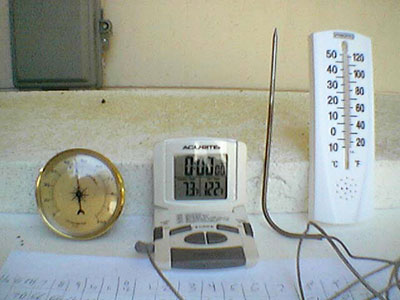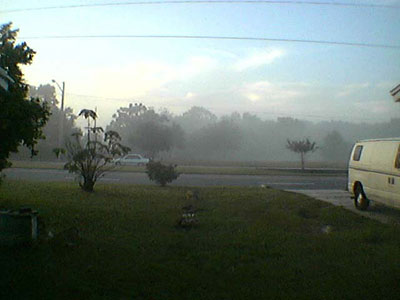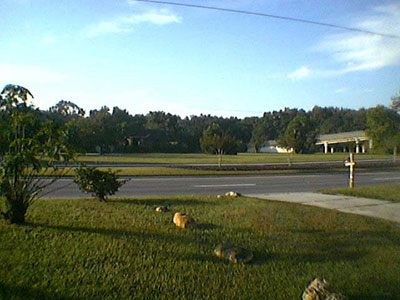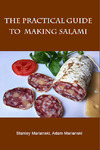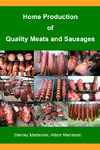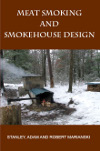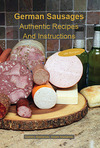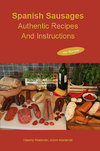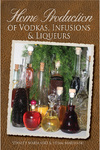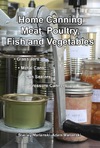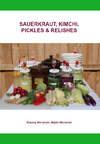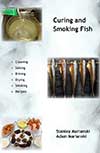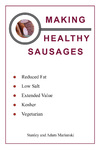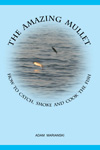Meats and Sausages
Meat Smoking and Humidity Control
Meat weight loss due to loss of moisture is directly linked to temperature and humidity. Thus it is of great importance that we learn how to manipulate those two factors when smoking meats. Regulating humidity in a home made smokehouse can be done indirectly and is relatively simple and cost-free. When smoking at home the humidity can be controlled by:
- Choosing the time of smoking.
- Placing a water-filled pan inside the smoker.
- Using moist wood chips or sawdust.
The amount of needed humidity is dictated by:
- Type of a product - hot smoked sausage, cold smoked sausage, smoked and air-dried ham, or just air-dried ham.
- The smoking method that will be employed.
There is more humidity in areas containing lakes, rivers, or being close to the sea shore. Arid areas such as deserts or mountains have less water and, subsequently less humidity. As you cannot change the physical location of the smokehouse, you have to learn how to go around it and how to choose the time of smoking to your maximum advantage. The most important rule to remember is that when the temperature goes up, humidity goes down (day), when the temperature goes down, the humidity goes up (night). When the clouds come in and it starts to drizzle, the humidity goes up immediately and will reach 100% in heavy rain.
In a home refrigerator, the humidity remains at about 45% at 40° F (4° C), and in a freezer about 70% at 0° F (-18° C). In an air-conditioned room, the humidity remains at 40-45%. Different smoking methods require different humidity levels: in dry climates like New Mexico or Arizona the relative humidity stays low at 10-20% during the day, so these are not perfect conditions for smoking. This inconvenience can be corrected by placing a water pan inside the smoker and using moist wood chips. The best solution is to smoke at night time when the temperature drops and the humidity increases.
When smoking meats in a smokehouse, or preparing sausages in the kitchen, we should know how to control humidity. When making uncooked dry meat products salting and moisture removal are two main methods of meat preservation. We must eliminate as much moisture as possible since the moisture is the main reason the meat spoils. We can employ fans blowing hot air at the sausages, but this will immediately harden the surface area of the meat and create a barrier that will trap moisture inside. The sausage will be dry on the outside but raw and moist inside. Cold-smoked or air-dried sausages are processed at the beginning at very high humidity levels and low temperatures. Low temperatures prevent bacteria growth and high humidity allows for slow moisture removal without hardening the surface of the sausage. Being able to control humidity we can create proper conditions for drying and smoking products at different temperatures. When cutting meats, we don't want moisture to condense on knives, stainless steel tables, or even walls as this will help bacteria to multiply and shorten the useful life of the product.
Humidity, or better said the "relative humidity" defines how much water (vapor) is present in the air at a particular temperature. In technical terms the relative humidity is the percentage of moisture air is holding compared to the maximum moisture it can hold. The air almost always contains some water vapor, and although we don't see it, it is there and it has a certain mass (weight). This amount of moisture greatly depends on the climate in which a person lives. There is always more humidity in areas rich with bodies of water, like lakes, rivers or seashores. Arid areas like deserts or mountains have fewer rivers and lakes and, subsequently less humidity. In hot weather when humidity is high, we feel even hotter than it is. The reason is that by perspiring (removing moisture), our body cools us and provides relief. If the humidity is high outside, our perspiration has nowhere to go and we sweat even in the shade.
The air at certain temperatures is capable of holding a fixed amount of moisture. The higher the temperature the more water can be held by air and vice versa. As the amount of moisture in the air is fixed for at least some time (the clouds can bring moisture and rain), raising the temperature lowers the relative humidity. There is a point for each temperature reading when the air can hold the maximum possible amount of water and we call it a saturation or a dew point. At this point the relative humidity is 100%. If the dew point is below freezing, it is called the frost point and the water vapor will form the frost or the snow. Air with a relative humidity of 50% contains half of the maximum moisture it could hold. If the room is at 100% humidity and we spill a bucket of water on the floor, this water will never evaporate as the air can not absorb more moisture. The only solution is to wipe it off or raise the temperature of the room, which will lower the relative humidity and the air will be able to hold more moisture. Keep in mind that in a confined room, we can adjust relative humidity by increasing/decreasing temperatures, nevertheless, the mass/weight of moisture remains the same. In order to change this amount of water, we have to either remove some of it using a dehumidifier or bring more moisture into the room with a humidifier, placing a water dish on a heater, boiling a kettle, etc. Note that a reading of 100% relative humidity means that the air is totally saturated with moisture, creating a chance of rain. This does not mean that we only get the rain when humidity on the ground is 100%. To get the rain the relative humidity must be 100% where the clouds are forming, but the relative humidity near the ground could be much less.
You can see in the following table how much water vapor can be held by air at different temperatures:
| Temperature in ° C | Water vapor (g) per kilogram of dry air |
| 50 | 88.12 |
| 40 | 49.81 |
| 30 | 27.69 |
| 20 | 14.85 |
| 10 | 7.76 |
| 0 | 3.84 |
Air with a temperature of 30° C ( can hold more than three times as much moisture as air at 10° C (50° F).
In the same room at 100% relative humidity, if we suddenly lower the temperature, the air can now hold less moisture and the droplets of water will start condensing on smooth surfaces like mirrors, knives, or even meat itself. You may say that the water is coming out of the air and it is almost like rain. This phenomenon can easily be observed in hot climates for example, in Florida. In the early morning (6 AM), when the temperature is low, there is so much humidity that there is water all over the car: the mirrors, the glass, and all over the body. The roof of the house is so wet that the water is dripping down. It is impossible to cut the wet grass as the mower will keep on stalling. We are at 100% relative humidity, the saturation. Then the sun gets up, the temperature starts to rise and the moisture goes back into the air. After a few hours, everything is dry again and the grass can now be cut with the machine.
To see how the temperature affects humidity in real life, we have taken hourly readings of the temperature and relative humidity in Florida on November 10/11, 2006.
The resulting table and the chart follow below:
| Time | 18 | 19 | 20 | 21 | 22 | 23 | 24 | 1 | 2 | 3 | 4 | 5 | 6 | 7 | 8 | 9 | 10 | 11 | 12 | 13 | 14 | 15 | 16 | 17 | 18 |
| 6 PM | mid. | AM | noon | 6 PM | |||||||||||||||||||||
| Temp.°F | 70 | 66 | 66 | 64 | 62 | 62 | 62 | 62 | 60 | 60 | 60 | 60 | 59 | 60 | 64 | 68 | 71 | 74 | 77 | 77 | 77 | 78 | 75 | 74 | 70 |
| Temp.°C | 21 | 19 | 19 | 18 | 17 | 17 | 17 | 17 | 15 | 15 | 15 | 15 | 14 | 15 | 18 | 20 | 22 | 23 | 25 | 25 | 25 | 26 | 24 | 23 | 22 |
| % humidity | 60 | 80 | 85 | 90 | 92 | 94 | 94 | 94 | 94 | 93 | 92 | 92 | 91 | 90 | 84 | 64 | 45 | 40 | 36 | 36 | 35 | 32 | 44 | 50 | 67 |
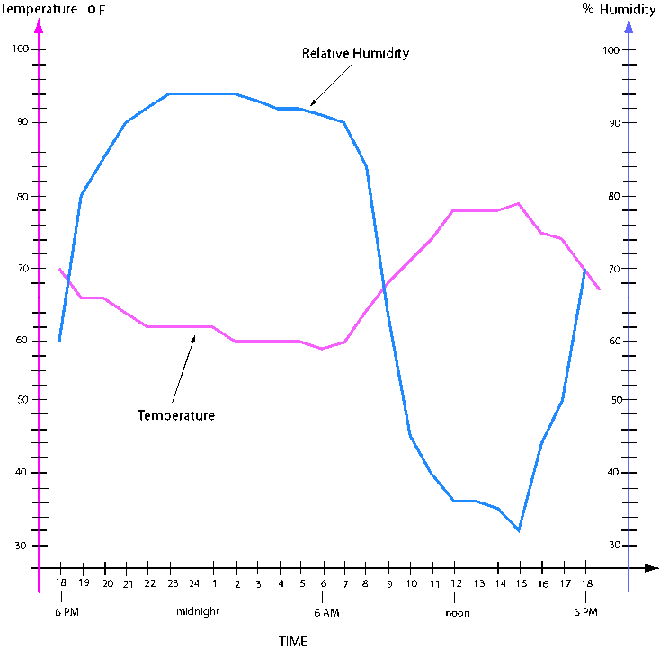
As documented on the graph, there was a steep rise in humidity levels (from 60 to 90%) when the temperature dropped from 70° F (6 PM) to 62° F (11 PM). These high humidity levels continued until 7 AM. Those would be the best humidity levels for cold smoking. The fire should be kept very low in order not to increase the temperature too much. Then, during the day the product should be placed in a cooler at 85% humidity levels. At 7 PM the same product would be taken from the cooler and cold smoked again.
There was a big drop in humidity levels from 90 to 36% when the temperature increased from 60° (7AM) to 77° F (12 AM-noon). Also, at 7 AM, there was so much humidity that there was fog all over the area which disappeared completely one hour later. The above chart proves that the cold smoked products can be produced from the middle of November to February, even in a hot Floridian climate, as long as we pay attention to the time of smoking, the temperature, and the humidity levels.
For more information on humidity:

